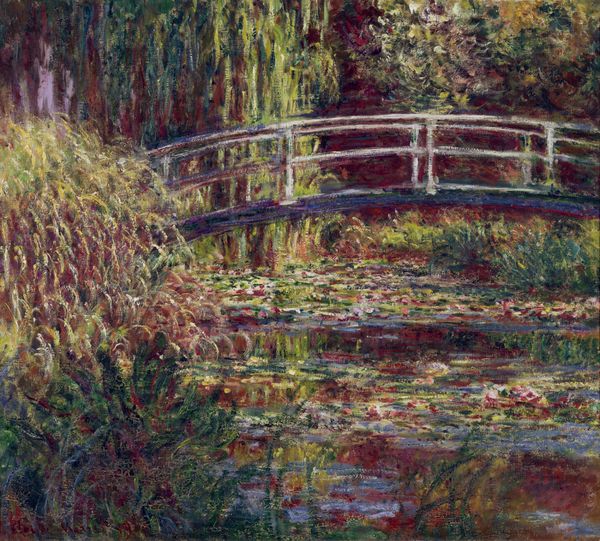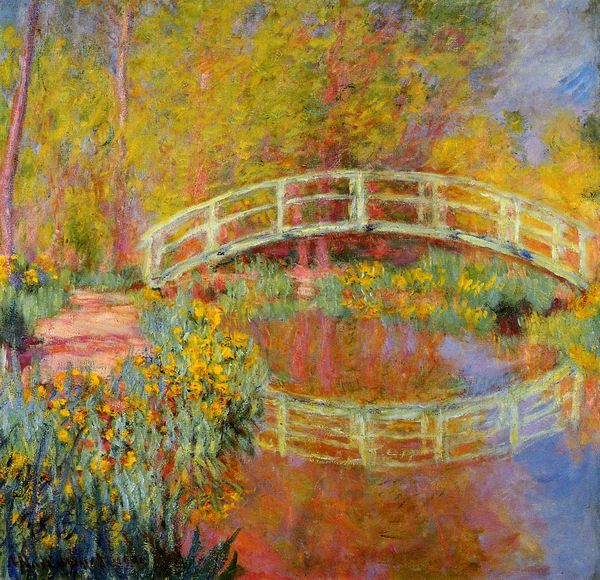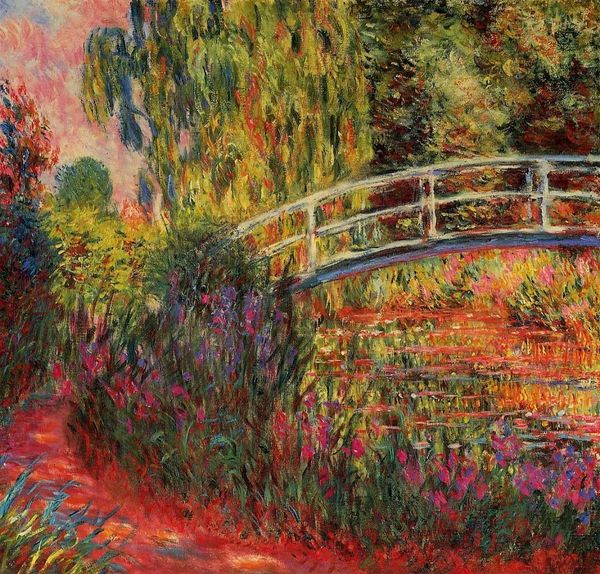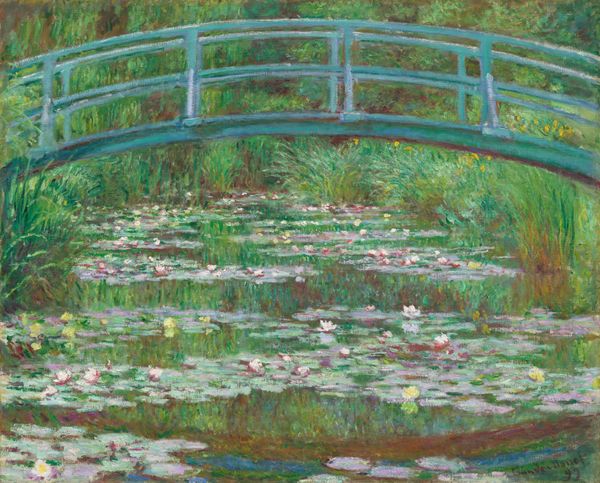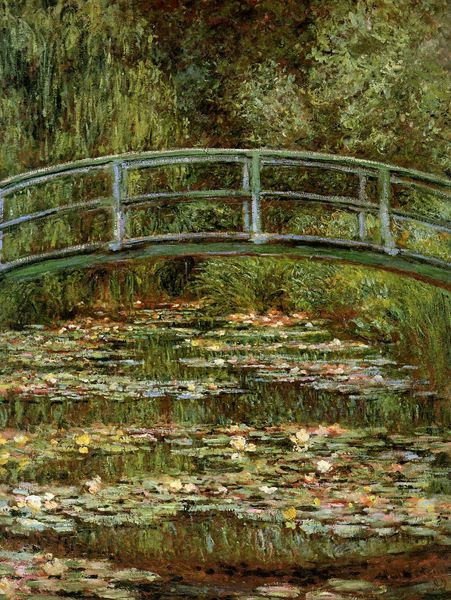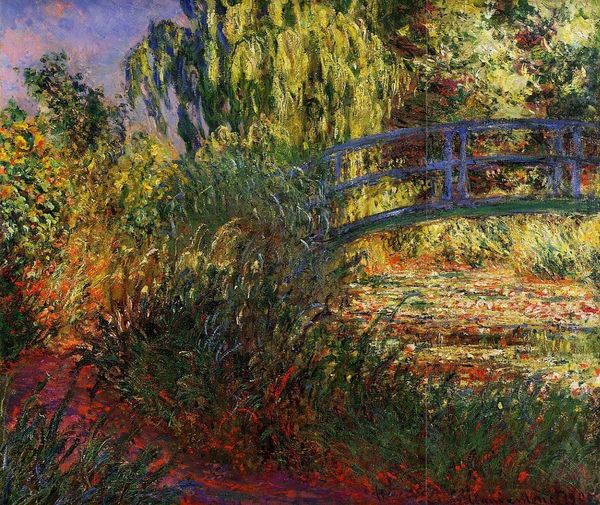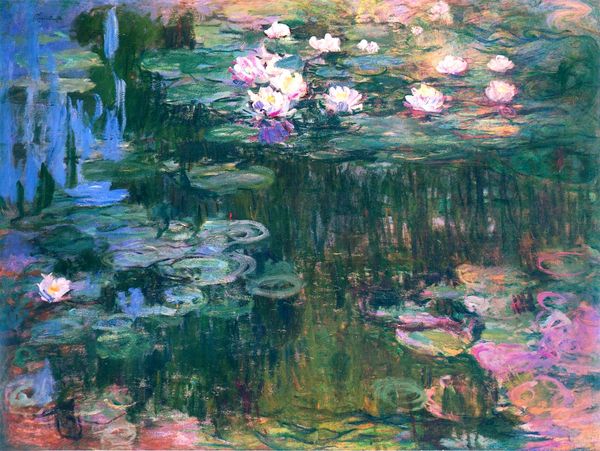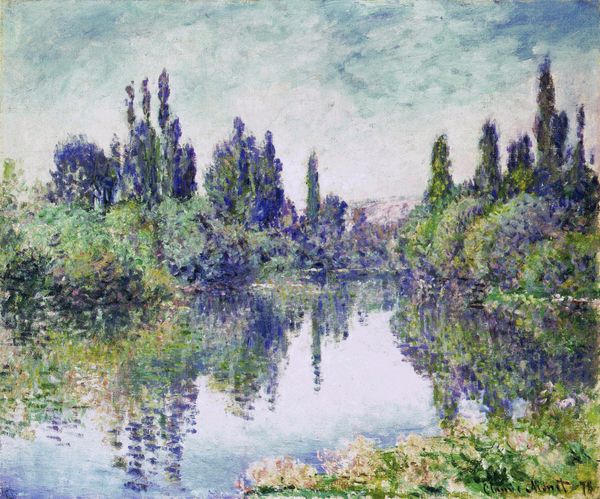
Copyright: Public Domain: Artvee
This painting by Claude Monet features a Japanese bridge amidst water lilies, evoking a dreamlike state through its soft, impressionistic brushstrokes. The bridge itself acts as a potent symbol, appearing in various cultural contexts as a link between worlds—the earthly and the spiritual, or the known and the unknown. Consider, for instance, the ancient Roman bridges, built not only for practical purposes but also as testaments to Roman engineering and power, embodying a sense of control over nature. In contrast, Monet's bridge seems to surrender to nature. The motif of the bridge, like a recurring dream, speaks to our collective longing for connection and transcendence. The water lilies, reminiscent of eyes gazing up from the depths, add another layer of psychological depth. They evoke a sense of introspection and the subconscious. In the grand tapestry of art history, the bridge motif resurfaces time and again, each time colored by the unique anxieties and aspirations of its era, forever evolving in its symbolic resonance.
Comments
No comments
Be the first to comment and join the conversation on the ultimate creative platform.


